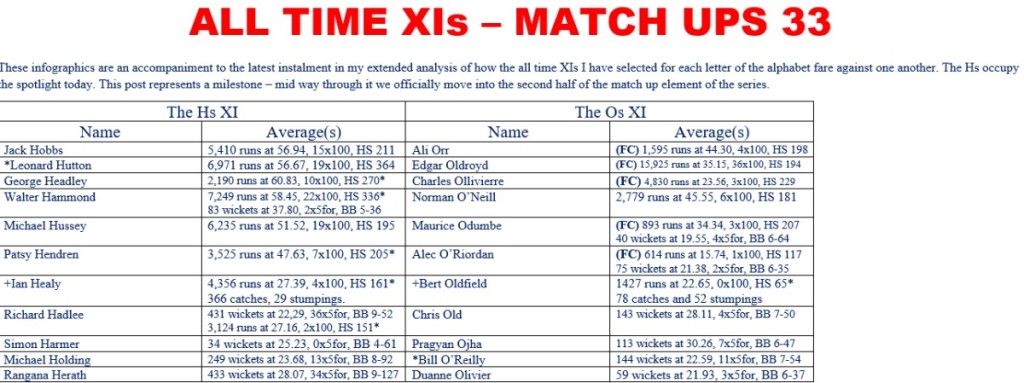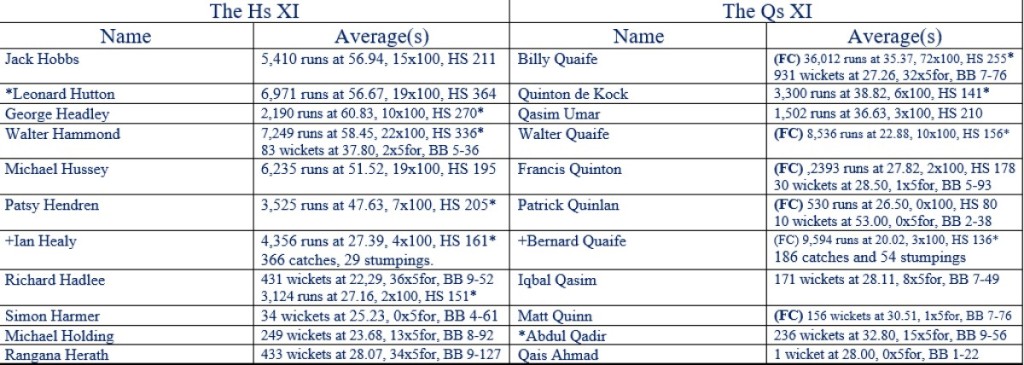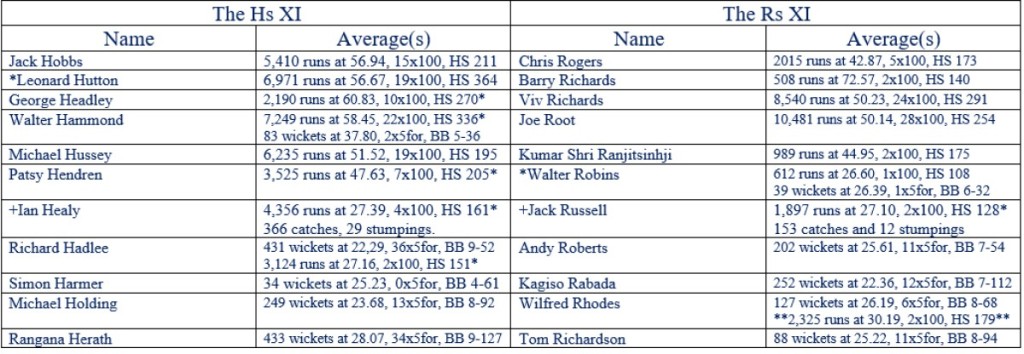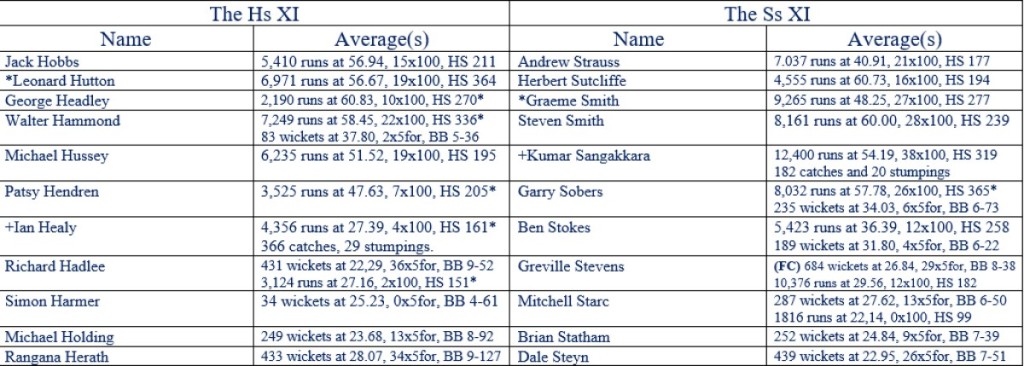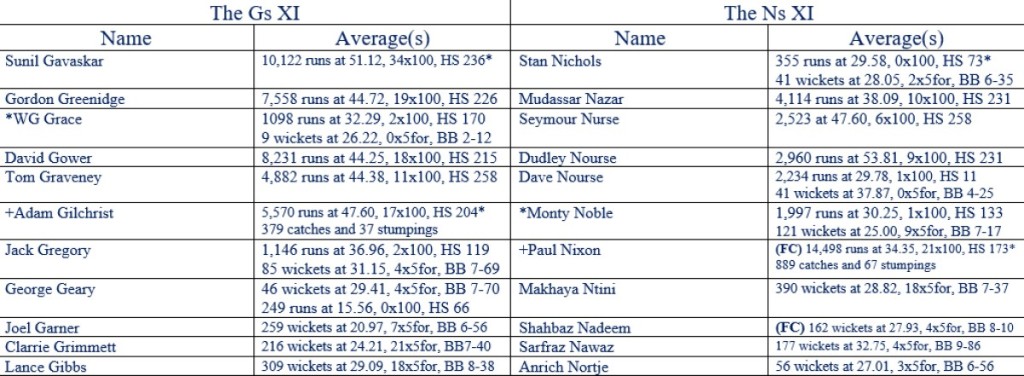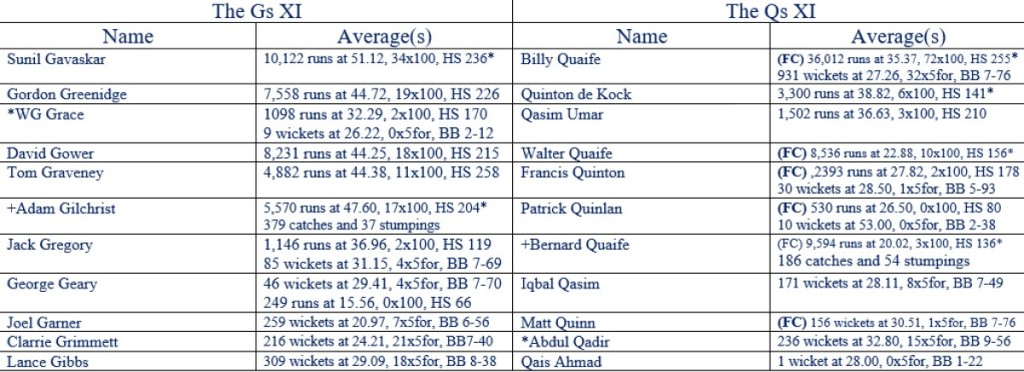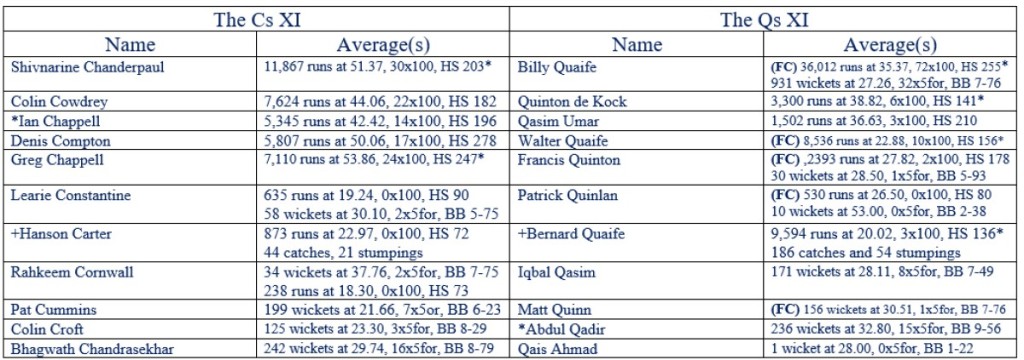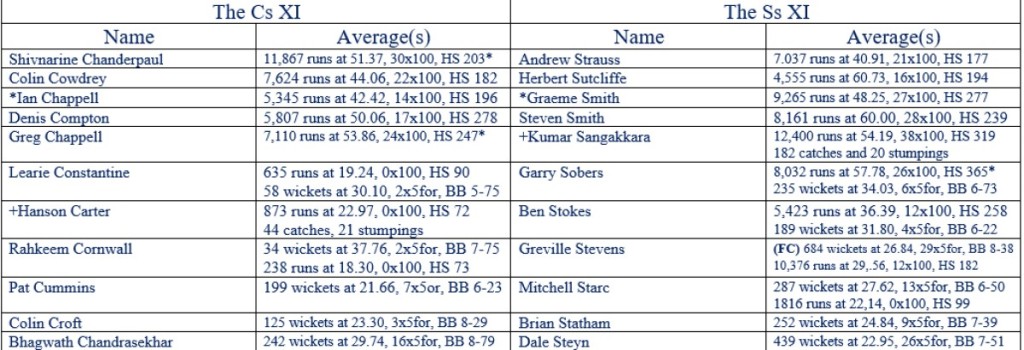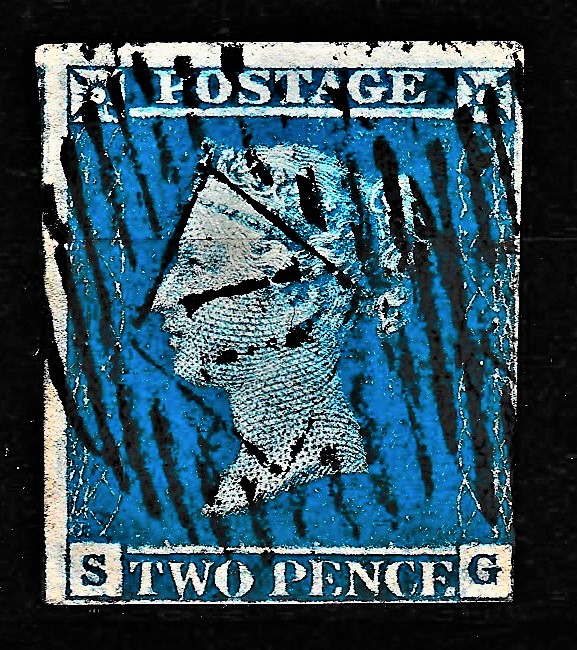Welcome to the latest instalment of my extended analysis of how the all time XIs I selected for each letter of the alphabet fare against one another. Today the Os are in the spotlight, and they start the day on 13.5 points out of a possible 75.
THE Os V THE Qs

The Qs have the better opening pair, given that Oldroyd is out of position, and they also clearly win the number three slot. O’Neill is massively clear of Walter Quaife at four, Odumbe outdoes Quinton in both departments at number five. Quinlan wins the batting element of the match up at six, but O’Riordan was a much better bowler. Oldfield is miles clear of Bernard Quaife. While Old and Olivier are a long way from being the best new ball pairing in this series, the Qs have only one recognized new ball bowler, Quinn. The Os have the best spinner on either side in O’Reilly, but Qasim and Qais Ahmad are probably better support options than Ojha and Odumbe. I think that the Os massive advantage in the pace/seam bowling department settles this one, but it is not an utter rout: Os 3.5, Qs 1.5
THE Os V THE Rs

The Rs totally dominate the batting, winning every match up down to number seven in that department. The Rs also have the better captain, while the keeping match up is a clash of titans. The Rs have the better pace trio, but O’Riordan’s left arm slightly reduces the difference as it gives the Os more variety. Rhodes is miles clear of Ojha as a left arm orthodox spinner, but O’Reilly is well clear of Robins as a leg spinner, and the Os have a third genuine spin option in Odumbe, whereas the Rs next best spin options after their front two would be between The Richardses and Root, so the Os are a little better in that department overall. The Rs advantages in batting, captaincy and pace/ seam bowling should be enough that their only disadvantage, in spin bowling, does not unduly damage them. I score this one Os 1, Rs 4.
THE Os V THE Ss

The Ss dominate the batting and are also streets clear in fast bowling and have to be given the captaincy match up as well. The Os have the better keeper and the better spin attack, though not massively so. This is a clear cut win for the Ss, but not quite a whitewash: Os 1, Ss 4.
THE Os V THE Ts

The Ts win every batting match up down to number six, lose the batting element of the keepers match up. The Ts also have the finer pace attack, and while O’Reilly outranks Trumble (he bowled on more batting friendly surfaces than Trumble) Tarrant outranks Ojha by a greater margin and Odumbe’s presence is not enough to influence this contest in the Os favour. The Ts also have to given the captaincy match up, while the keeping honours are split. There can be only one score: Os 0, Ts 5.
THE Os V THE Us

The Os have the better opening pair, the Us win the batting match ups from 3-7 inclusive, although their only bowling option in this slots, Umrigar, is outranked by both Odumbe and O’Riordan, and Umar Akmal massively loses the keeping match up. The Os claim pace bowling honours – Umran Malik is unproven and Umar Gul fairly ordinary, and O’Riordan’s left handedness lends them extra variety, though the right armed George Ulyett is of comparable stature as a bowler. O’Reilly outranks Ur Rahman, Underwood outranks Ojha, Odumbe monsters Umrigar in the bowling stakes, so I award spin bowling honours to the Os as well. The Us are better in batting and captaincy, but outclassed everywhere else. I will allow their strong batting to make its presence felt in the contest, but this is a clear win for the Os: Os 4, Us 1.
THE Os PROGRESS REPORT
The Os have scored 9.5 points out of 25 today and now have 28 points out of a possible 100, 28% overall.
PHOTOGRAPHS
My usual sign off…






























































